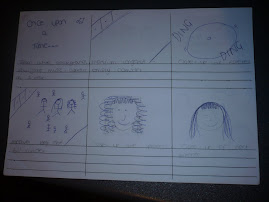The Cafe where Cinderella works is included in the trailer but not also does it show that she comes from a well off family she still has too work for herself and earn her own living spences. The round tables add a friendly atomosphere and aswell have the counter running the whole way around the Cafe, this also makes the Cafe look stylish with the tiled floors coloured black and white which is very 80's style.
Another Main location used in this film is the school. It is used for many things such as: A School (with lessons), A Prom, A Football Match. It is a romantic environment as it is common for teenagers to fall in love at school and meet there one true love. By including this location most of the target audience can relate to the story and engage more to the film. In the school is a shot of the library and how Cinderella spends most of her time in there talking to her 'Prince Charming' Via the computor on an internet site, which adds to the mystery. She is also shot in the library doing her work which shows the audience that she is smart and wants to well later on in life.
Also featured is the batting cage where Cinderella works on her baseball skills. This location is used as her personal space as earlier on in the story we are told that she used to play there with her dad before he was killed. The cage she is in perhaps represents the fact she feels trapped and this is the only place she feels she can let off steam.
Like every fairytale eneding the Princess always gets the Prince. The location is in the ball what we call a prom. The lighting used adds to the romantic feel and the location seems to be well style and fits the narrative well. The colour scheme used in this location adds to the enchanted feel of the ball and also adds a formal appeal to this scene. When the camera moves outside, into the garden, an arch comes into shot decorated with white flowers and beautiful lighting which sets the scene off nicely. The white fencing ties in with the white flowers which compliments the whole scene well. The fairy lights composition seem to get more compact as the camera drops down to reveal a the bottom of the arch. Overall creating a fairy tale like location.
We decided for our film trailer to be based around our school as it would be a familiar setting to our target audience and one in which they can relate to. We did use other locations such as parks and shopping centres but our shots are largly around school. Our main establishing shot was a school corridor, with this we filmed in different corridors around school as we had to make sure the lighting was at the correct levels.












